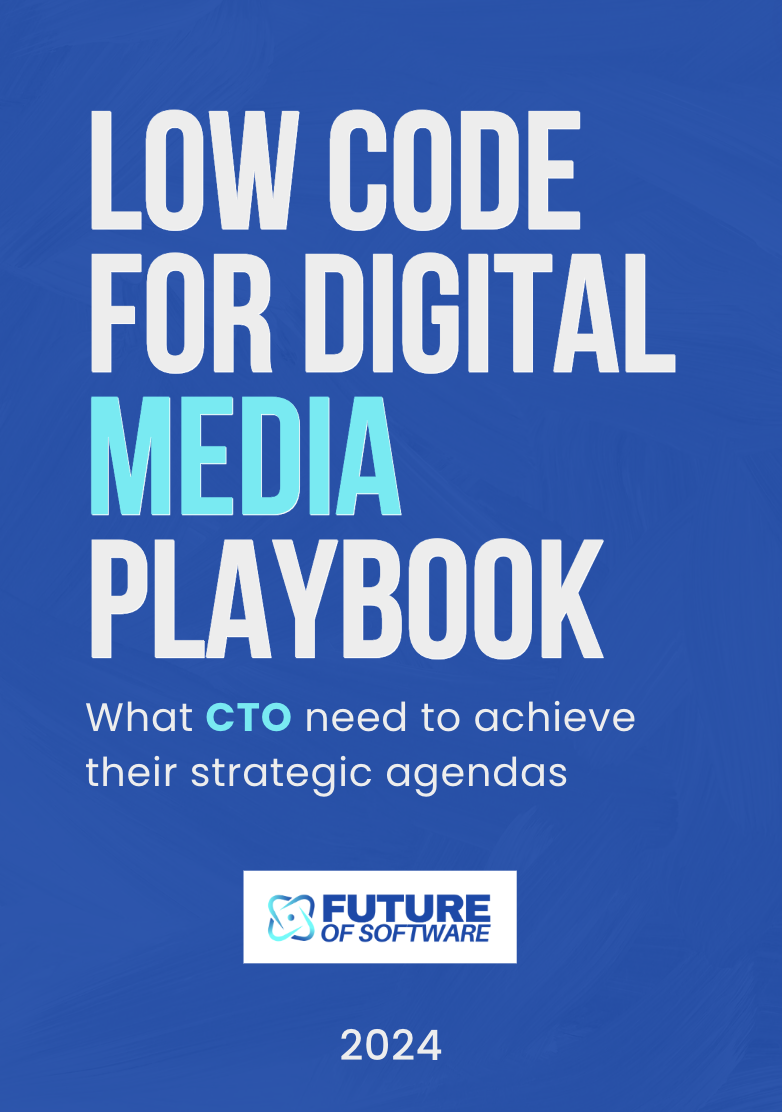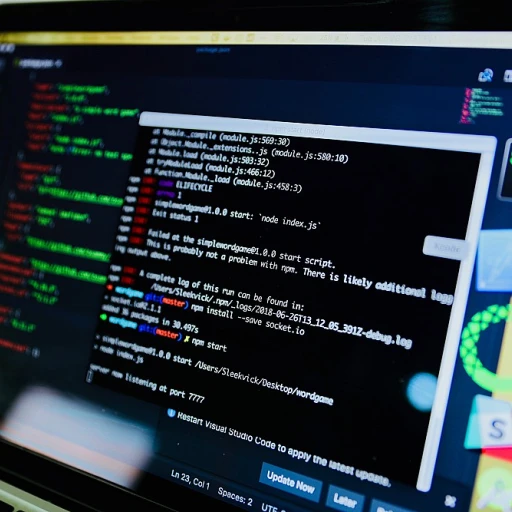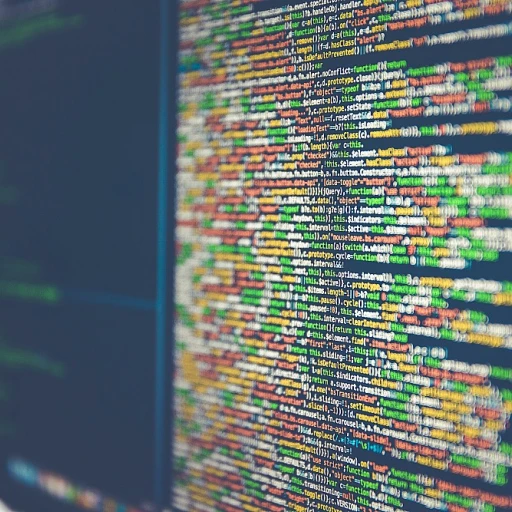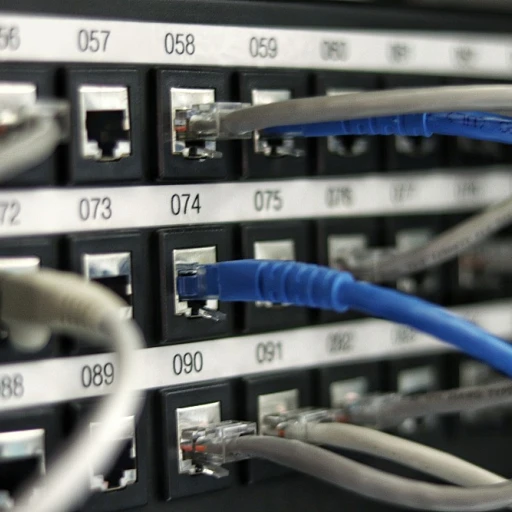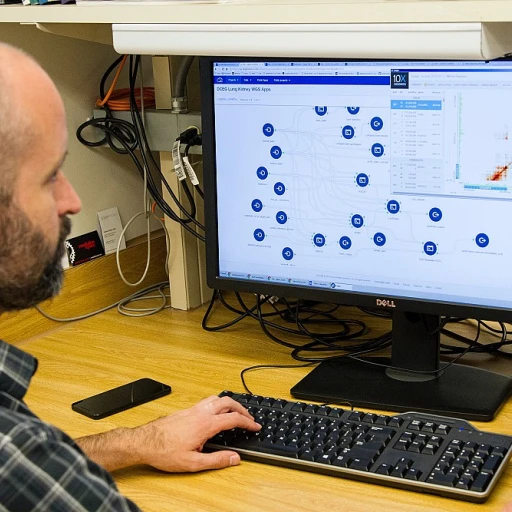
Understanding IoT and Its Impact on Software Development
IoT's Influence on Software Development
The Internet of Things (IoT) has swiftly transitioned from a futuristic concept to a crucial element shaping the way we live and work. As a network connecting myriad devices, IoT has opened the door to innovations that were unthinkable even a few years ago. Not just limited to industrial applications, IoT is permeating everyday life, from smart homes to personalized healthcare solutions.
This burgeoning market is undeniably transforming the landscape of software development. Developers are now tasked with creating applications that facilitate seamless interactions between devices, humans, and systems. The challenge lies not only in ensuring interoperability but also in maintaining high standards of security and privacy. The demand is escalating for software that is both intuitive and robust, capable of processing vast amounts of data in real time.
The effect of IoT on software development extends beyond creating mere applications; it requires a fundamental shift in how developers approach programming. This involves embracing new programming paradigms and mastering the intricacies of network connectivity, data analytics, and system integration. Furthermore, IoT software development is fostering innovation in fields such as artificial intelligence and machine learning, which play significant roles in managing and analyzing the enormous volumes of data IoT devices generate.
As the integration of IoT grows, we are witnessing a reshaping of traditional industries and work environments. To gain insights into how IoT is revolutionizing the future of work, consider exploring this reshaping of work environments.
The journey into IoT software development is complex but rewarding. Success in this field hinges on embracing the fundamental changes in software development practices while proactively seeking solutions to the challenges posed by this digital transformation.
Key Technologies in IoT Software Development
Essential Technologies in the IoT Ecosystem
The Internet of Things is reshaping how industries operate and how software solutions are developed. As we delve into the realm of IoT software development, it's crucial to recognize that it sits at the intersection of several technologies, each contributing uniquely to realize the full potential of smart, connected devices.Connectivity and Network Protocols
One of the foundational aspects of IoT development is the ability for devices to communicate seamlessly. This is facilitated by a variety of communication protocols such as Wi-Fi, Bluetooth, Zigbee, and LoRaWAN. These protocols need to be chosen based on the specific requirements of the IoT solution—ranging from power efficiency to data rate needs.Data Processing with Edge and Fog Computing
IoT software development often involves processing large amounts of data in real-time. With the advent of edge and fog computing, data processing can occur closer to where it is generated. This not only reduces latency but also minimizes the bandwidth costs associated with sending data to centralized data centers. Such distributed computing models are instrumental in applications like smart cities and autonomous vehicles, bridging the gap between local and cloud resources.Interoperability through Standardization
The diversity of devices and platforms in the IoT landscape makes interoperability a significant concern. Developers must navigate through a myriad of standards such as MQTT (Message Queuing Telemetry Transport) and CoAP (Constrained Application Protocol) to ensure the seamless exchange of information. These protocols facilitate device-to-device communication and are integral to building scalable IoT solutions.Embedded Systems Development
Embedded systems are the backbone of IoT devices, encompassing everything from sensors to actuators. Developers working on IoT projects must possess expertise in low-level programming languages such as C and C++ to efficiently manage the hardware-software interaction and optimize performance, energy consumption, and reliability.Cybersecurity Measures
With connectivity comes security vulnerabilities. As part of IoT application development, incorporating robust cybersecurity measures is non-negotiable. This includes employing encryption, authentication protocols, and ongoing monitoring to protect against cyber threats, ensuring that sensitive information remains secure across the device ecosystem. By focusing on these key technologies, developers can harness the vast opportunities presented by IoT while addressing the complexities involved in creating smart, interconnected systems. In the ongoing journey of IoT, technological advancements will continue to drive innovation and challenge developers to build even more sophisticated solutions.Challenges and Solutions in IoT App Development
Addressing Compatibility and Integration Issues
Developing software for the Internet of Things (IoT) often presents a myriad of challenges, with one of the most significant being compatibility and integration across a wide range of devices and platforms. The IoT ecosystem comprises various hardware from different manufacturers, each with its unique specifications and communication protocols. This diversity can complicate the development process, as developers must ensure seamless interoperability. The use of standardized protocols and open-source platforms can aid in mitigating these issues. By adopting universally accepted communication protocols like MQTT and CoAP, developers can facilitate smoother communication between devices. Additionally, leveraging open-source platforms reduces dependency on proprietary solutions, fostering greater compatibility and ease of integration.Ensuring Data Security and Privacy
The proliferation of interconnected devices poses significant security and privacy risks. With every new IoT device added to a network, an additional point of vulnerability emerges, potentially exposing sensitive data. Therefore, software developers must prioritize robust security measures to protect against unauthorized access and data breaches. Implementing end-to-end encryption, utilizing secure firmware updates, and maintaining stringent access controls are critical strategies in safeguarding IoT systems. Additionally, adhering to data protection regulations and best practices is essential for ensuring user privacy. To delve deeper into how IoT is transforming the workplace landscape and the intersection with security, consider exploring this discussion on IoT's impact on the future of work.Managing Scalability and Maintenance
As IoT solutions grow in scale, managing and maintaining these vast networks becomes increasingly challenging. Developers must design systems that can scale efficiently, accommodating hundreds or even thousands of devices without compromising performance. Cloud computing plays a pivotal role in scaling IoT solutions by providing computational resources on-demand, making it easier to handle the influx of data generated by numerous devices. Moreover, predictive maintenance powered by AI can preemptively identify potential issues, reducing downtime and extending the lifespan of IoT devices. For more insights into how future technology is influencing user interaction, you might find it interesting to explore this piece on the evolution of hands-free interfaces.Real-World Applications of IoT Software
Real-life IoT Applications Revolutionizing Industries
In recent years, the Internet of Things has transcended from a futuristic concept to a tangible reality, and its impact on various industries is truly transformative. Building upon the foundational aspects of IoT's impact on software and the technologies driving its development, it is inspiring to see its real-world applications making waves globally. One of the most remarkable industries harnessing the power of IoT is healthcare. Remote patient monitoring, using IoT-enabled devices, is revolutionizing patient care by allowing real-time health data to be sent directly to healthcare professionals. This not only enhances patient care but also reduces hospital congestion, enabling efficient allocation of medical resources. Another sector experiencing a significant overhaul is logistics and supply chain management. With IoT sensors embedded in transport vehicles and storage units, companies can track their assets and inventory in real-time. This results in heightened efficiency, reduced costs, and minimized human errors. Moreover, predictive maintenance facilitated by IoT helps in anticipating equipment failures before they happen, ensuring smooth operational functionalities. In agricultural landscapes, smart farming solutions powered by IoT technology are ushering in an era of precision agriculture. Farmers are utilizing IoT devices to monitor soil moisture, control irrigation systems, and manage crops more effectively. This technology is pivotal in offering sustainable agriculture solutions, enhancing yield quality, and minimizing resource wastage. Lastly, the rise of smart cities employs IoT to optimize energy consumption, improve traffic management, and enhance public safety. IoT systems collect and analyze data from various sources in the city environment, driving informed decisions that improve citizens' overall quality of life. These compelling examples are just the tip of the iceberg as IoT apps continue to evolve. Embracing these opportunities requires overcoming challenges discussed in earlier sections. It's critical to build robust security frameworks and ensure seamless integration with existing IT infrastructures. The IoT landscape is flourishing with innovation, and its real-world applications demonstrate its vast potential to reshape how industries operate, paving the way for a more connected, efficient future. Understanding these applications illuminates why choosing the right IoT development partner, as highlighted in another section, can be a cornerstone to success in this expansive field.The Role of Cloud in IoT Development
Cloud Infrastructure: The Backbone of IoT
The integration of cloud technology in IoT development has transformed the landscape of software solutions, providing the scalability and flexibility necessary to manage vast networks of connected devices. As discussed earlier, the Internet of Things (IoT) has a profound impact on how software is developed, requiring innovative approaches to handle the unique demands of these interconnected systems.
Cloud platforms offer a robust infrastructure that supports the seamless operation of IoT applications. They enable real-time data processing and storage, which is crucial for the efficient functioning of IoT devices. By leveraging cloud services, developers can ensure that their applications are both scalable and resilient, capable of handling the influx of data generated by a multitude of devices.
Enhancing Data Management and Security
One of the primary advantages of using cloud technology in IoT development is its ability to enhance data management and security. With the cloud, developers can implement sophisticated data analytics and machine learning algorithms to derive valuable insights from IoT data streams. This capability not only improves decision-making processes but also enhances the overall functionality of IoT applications.
Moreover, cloud providers offer advanced security measures to protect sensitive data. As IoT devices often collect and transmit personal information, ensuring data security is paramount. Cloud platforms provide encryption, access control, and regular security updates, helping to safeguard data against potential breaches.
Facilitating Seamless Integration and Interoperability
Cloud technology also plays a crucial role in facilitating the integration and interoperability of diverse IoT systems. As IoT ecosystems often consist of devices from different manufacturers, ensuring that these devices can communicate effectively is essential. Cloud platforms provide standardized APIs and protocols that enable seamless integration, allowing developers to create cohesive IoT solutions.
In summary, the cloud serves as the backbone of IoT development, offering the necessary infrastructure, data management capabilities, and security features to support the growing demands of IoT applications. As the IoT landscape continues to evolve, the role of cloud technology will undoubtedly become even more integral to the development of innovative and efficient IoT solutions.


